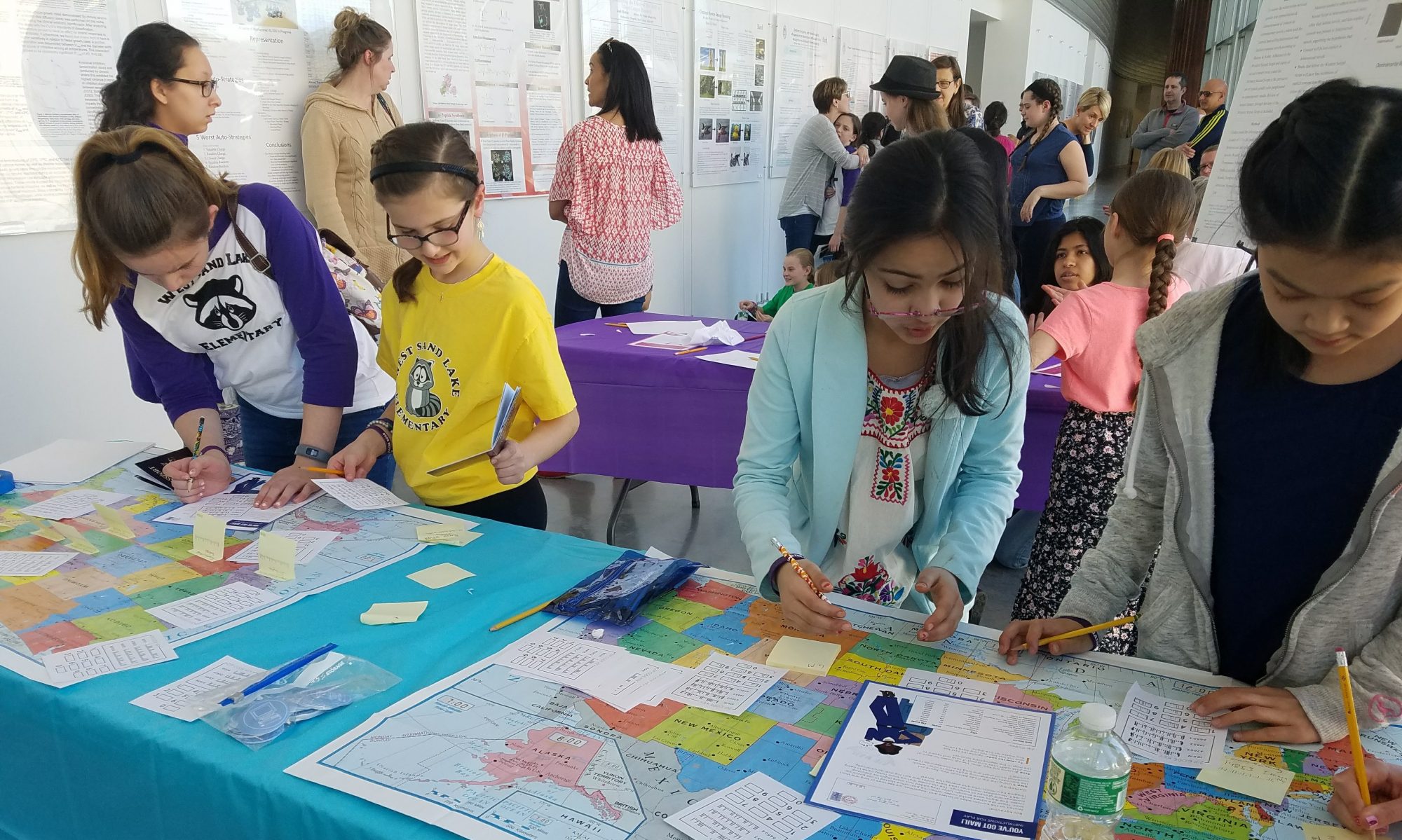Greetings!
We started our day ambitiously, playing a revised version of “set” where students all got the change to meet each other, after being assigned a “set” card and being sent out to meet two others who would complete a “set” trio. It’s the CAMP’s official opinion that the students were far better at achieving this goal than any of the staff.
Since the theme for this year is mathematics, magic, and mystery the math class today focused on card tricks and the mathematics behind it. The first thing they did was a card trick called the “27 card trick.” The magician lays out 27 cards in three columns of nine cards each. They ask the audience member to pick a card and only tell the magician which column it is in. They shuffle up the cards in a very specific way and figure out which card it was. Students then got into groups and tried to figure out how the trick works. Frances then got the class together and then explained it.
Frances then demonstrated the “missing card” trick where the magician guesses which card is missing from the deck. The magician asks the audience member to pick a card and keep it, and not show it. The magician then starts setting individual cards on the table and eventually guesses the card in the audience members hand.


The computer science class started with a small exercise demonstrating the differences between the natural language we use everyday and a programming language. The students were asked to write a list of commands that would make Matt (the instructor) draw a diamond shape on the board. To the frustration of all students, none of the attempts were successful. This showed how rigorous and specific a programming language is. Then the students were introduced to Processing, the software they’re going to learn and use in the next few days.

After lunch, students divided up into three groups for afternoon activities. The three activities offered today were hiking to the Parliament of Reality, working on solving the Rubik’s Cube, and drawing portraits of each other.


